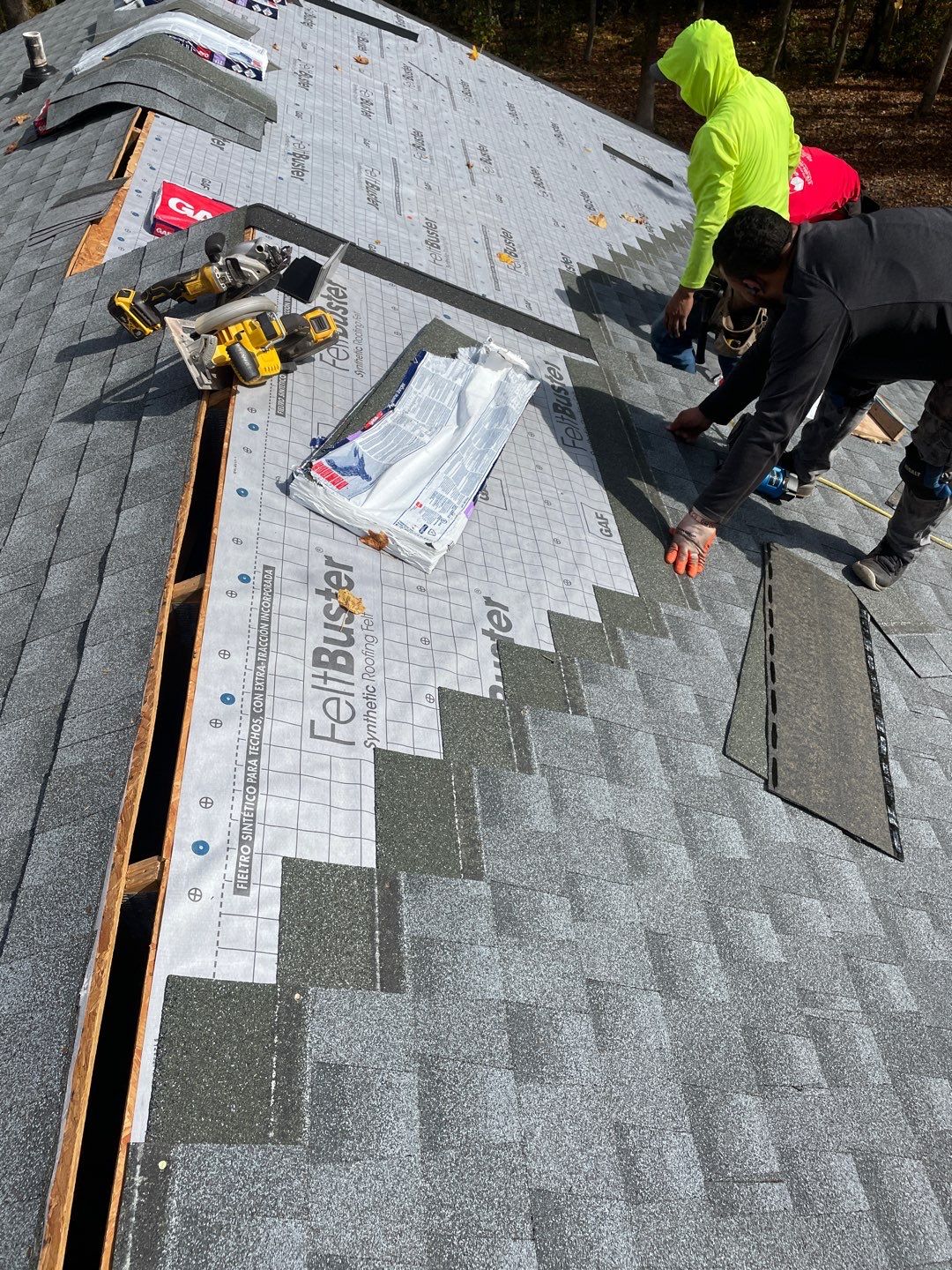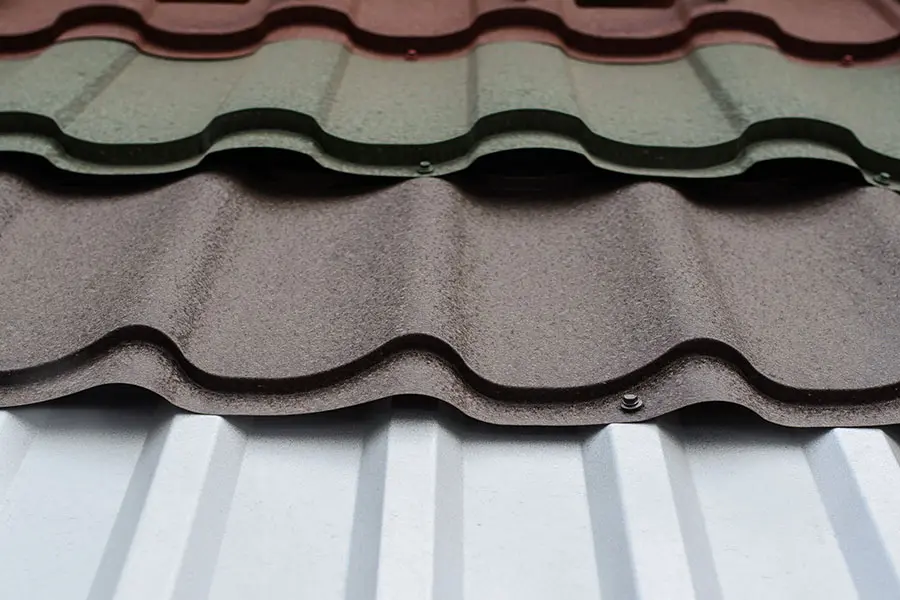Important Questions to Ask Gainesville Roofing Companies Before Hiring
Important Questions to Ask Gainesville Roofing Companies Before Hiring
Blog Article
Ideal Practices for Ensuring Correct Roofing Air Flow
Ensuring appropriate roof covering air flow is critical for the durability and effectiveness of a roof. A balanced intake and exhaust air vent ratio, generally 1:300, plays a pivotal duty, with consumption vents ideally placed at the lower side of the roof for amazing air access and exhaust vents at the peak for warm air exit. Routine examinations to recognize blockages and preserve clear air movement are paramount. Keeping insulation away from vents is critical to protect against air movement limitation. Recognizing these foundational components sets the stage for even more in-depth understandings into installation and maintenance methods that can dramatically improve your roof's performance.
Understand Air Flow Fundamentals
Effectively comprehending air flow basics is crucial for making sure the longevity and performance of roofing systems. Efficient ventilation minimizes moisture buildup and temperature extremes in the attic, both of which can bring about considerable architectural damage with time. A well-ventilated roof covering helps in stopping common problems such as mold growth, wood rot, and ice dams, which can compromise the stability of the roofing materials and the underlying structures.
The primary goal of air flow is to help with the motion of air, permitting a constant exchange between the interior and outdoor atmospheres. This balance is accomplished via a mix of consumption and exhaust vents that collaborate to maintain optimum air flow. Consumption vents, generally situated along the soffits or eaves, permit fresh air to get in the attic area, while exhaust vents, frequently positioned at or near the roofing system ridge, make it possible for hot, moist air to run away.
Key variables influencing the efficiency of roofing system air flow consist of correct positioning, adequate sizing, and making certain that both intake and exhaust vents are unhampered. Regular assessment and maintenance are essential to identify potential clogs, damages, or inefficiencies in the ventilation system, thereby securing the roofing's efficiency and toughness.
Kinds Of Roofing System Vents
Roofing vents play a crucial duty in maintaining reliable attic air flow and, by expansion, the total health of the roof. Numerous sorts of roof vents are readily available, each with distinct benefits tailored to certain roof demands. Ridge vents, for instance, are installed along the roofing's height, enabling cozy, moist air to run away from the attic room. They supply continual air flow and mix effortlessly with the roofline, making them both reliable and aesthetically pleasing.

Soffit vents are set up under the eaves and work in tandem with roofing vents to ensure a balanced consumption and exhaust system. By allowing cooler air to go into from below, soffit vents help with the expulsion of warm air through top vents. Gable vents, located on the exterior walls of the attic room, deal another effective service, specifically in homes with saddleback roofs.
Analyze Your Current Ventilation

Next, consider the age and condition of your roofing materials and air flow parts. Older systems may not follow existing building regulations or may have degraded in time, reducing their efficiency. Conduct a thorough examination to identify any type of indications of wear and tear, such as corrosion, damages, or voids that might compromise the system's efficiency.
In addition, measure the attic room temperature and humidity degrees. Heats and moisture can show poor ventilation - roofing companies gainesville florida. Utilize a hygrometer and thermometer to get accurate analyses, contrasting them with exterior problems. Relentless discrepancies recommend possible issues that require addressing.
Installation Best Practices
Reliable setup of roofing air flow systems is critical for guaranteeing optimum performance and longevity. Proper installation starts with comprehending the specific ventilation needs of the roofing system and the structure it covers. This involves computing the right proportion of consumption to exhaust vents, typically adhering to the 1:300 policy, which specifies one square foot of air flow for every 300 Bonuses square feet of attic flooring room.

The positioning of vents is equally essential. Consumption vents need to be installed at the roof's reduced side, typically in the soffits, to permit cool air to enter. Exhaust vents, on the various other hand, must be set up near or at the roof's height to facilitate the departure of cozy, moist air. This develops a natural air flow that helps maintain temperature level and moisture equilibrium within the attic room space.
Seal all air vent links meticulously to stop air leaks and potential water seepage. Use premium materials and comply with maker standards to ensure resilience and efficiency. Furthermore, integrating ridge vents with baffles can significantly enhance air flow efficiency by protecting against wind-driven rainfall and snow from entering the attic room.
Eventually, exact setup of roof covering ventilation systems reduces potential issues such as mold and mildew development, ice dams, and architectural damages, making sure the roofing system's integrity and the building's general wellness.
Routine Upkeep Tips
Uniformity in maintenance practices is essential to making sure the long-lasting effectiveness of roofing ventilation systems. Throughout these evaluations, guarantee that vents are cost-free of particles, nests, and various other obstructions that can hamper airflow.
Cleaning up the vents is one more important job. Utilize a soft brush or a vacuum to get rid of dust and particles from intake and exhaust vents. Be cautious not to damage the air vent screens or louvers throughout the procedure. In addition, examine the attic space for any type of indications of water damages, which might jeopardize the integrity of the roof.
Appropriate insulation is similarly crucial. Make certain that attic room insulation does not obstruct the vents, as this can significantly limit air movement. If any insulation has actually shifted or settled, reposition or replace it to maintain an efficient barrier.
Last but not least, replace any type of damaged or missing out on parts promptly. Busted Click Here vents, cracked roof shingles, or scrubby flashing can all add to inadequate ventilation and needs to be addressed right away. Routine upkeep makes sure that the roof covering air flow system operates efficiently, thus extending the life expectancy of the roof covering itself.
Final Thought
Ensuring correct roof covering ventilation is paramount for preserving the effectiveness and toughness of a roof system. Adherence to the 1:300 intake and exhaust vent proportion, coupled with the tactical placement of vents, is necessary.
A well balanced intake and exhaust air vent proportion, typically 1:300, plays a critical role, with intake vents ideally placed at the reduced side of the roof covering for trendy air access and exhaust vents at the my response optimal for warm air leave. Intake vents, commonly located along the soffits or eaves, allow fresh air to get in the attic area, while exhaust vents, frequently situated at or near the roof ridge, enable warm, humid air to run away.
Soffit vents are mounted under the eaves and work in tandem with roof covering vents to make sure a well balanced intake and exhaust system. By allowing cooler air to go into from below, soffit vents promote the expulsion of hot air via top vents. Adherence to the 1:300 intake and exhaust vent proportion, combined with the calculated placement of vents, is crucial.
Report this page